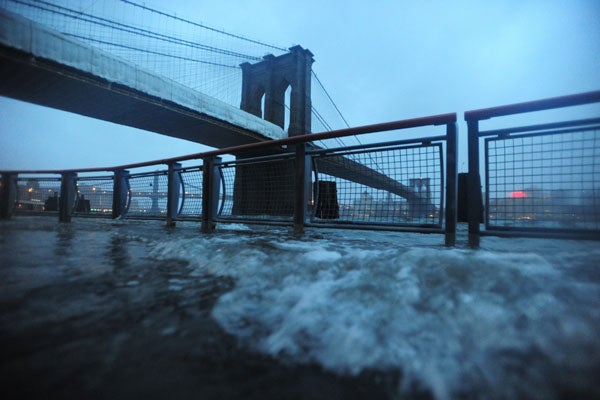Remembering Hurricane Sandy “Relief”: A Problem of Federal Spending
Christina Baworowsky /
With the recent anniversary of Hurricane Sandy and the budget storm looming ahead, it is worth remembering how Congress “helped” victims of the storm.
A year later, those affected by the storm have seen almost none of the promised aid. This should come as no surprise: At the time the $50 billion relief package was being debated, the Congressional Budget Office estimated that at least half the money would not be spent until after 2015, well after the emergency was over, and on special interest projects.
At the time, Taxpayers for Common Sense, a budget watchdog group, enumerated in an analysis exactly where Congress agreed to divert the relief aid. Here are some examples of the mishandling of taxpayer funds:
- $1 million to the Drug Enforcement Administration to repair or replace 15 vehicles;
- $2 million for Smithsonian roof repairs;
- $3 million for oil spill research by the Bureau of Safety and Environmental Enforcement;
- $25 million to improve weather forecasting and hurricane intensity forecasting;
- $118 million for Amtrak—$86 million more than the President requested in his aid proposal—to be used on non-Sandy-related Northeast Corridor upgrades;
- $2 billion for the Federal Highway Administration to spend on roads across the country;
- $3.461 billion for Army Corps construction projects, about $2.9 billion of which is for the Sandy region, leaving over $499 million for the Corps to transfer to previous projects anywhere in the country; and
- A $16 billion Community Development Fund that would go to not only Sandy states but any major disaster declarations of 2011, 2012, and 2013.
The Sandy relief package was less about addressing the immediate needs of victims and more about securing a long-term stream of funding for special interests loosely connected to the hurricane. It is yet another example of what is causing another storm in Washington: Congress has a massive spending problem.
People along the eastern seaboard immediately needed funds so that they could put their lives back together. However, too many in Congress were more concerned with funneling money to special interests. Fixing damaged museum roofs, upgrading train tracks, and improving weather forecasting all sound like they could have merit to them, but they should not be in legislation for emergency relief so that Congress can evade budget caps.
As the Hurricane Sandy “relief” package showed, Congress is good at spending more. But with $16 trillion in debt and counting, it is high time Congress became good at spending less and cutting more.
Christina Baworowsky is currently a member of the Young Leaders Program at The Heritage Foundation. For more information on interning at Heritage, please click here.

